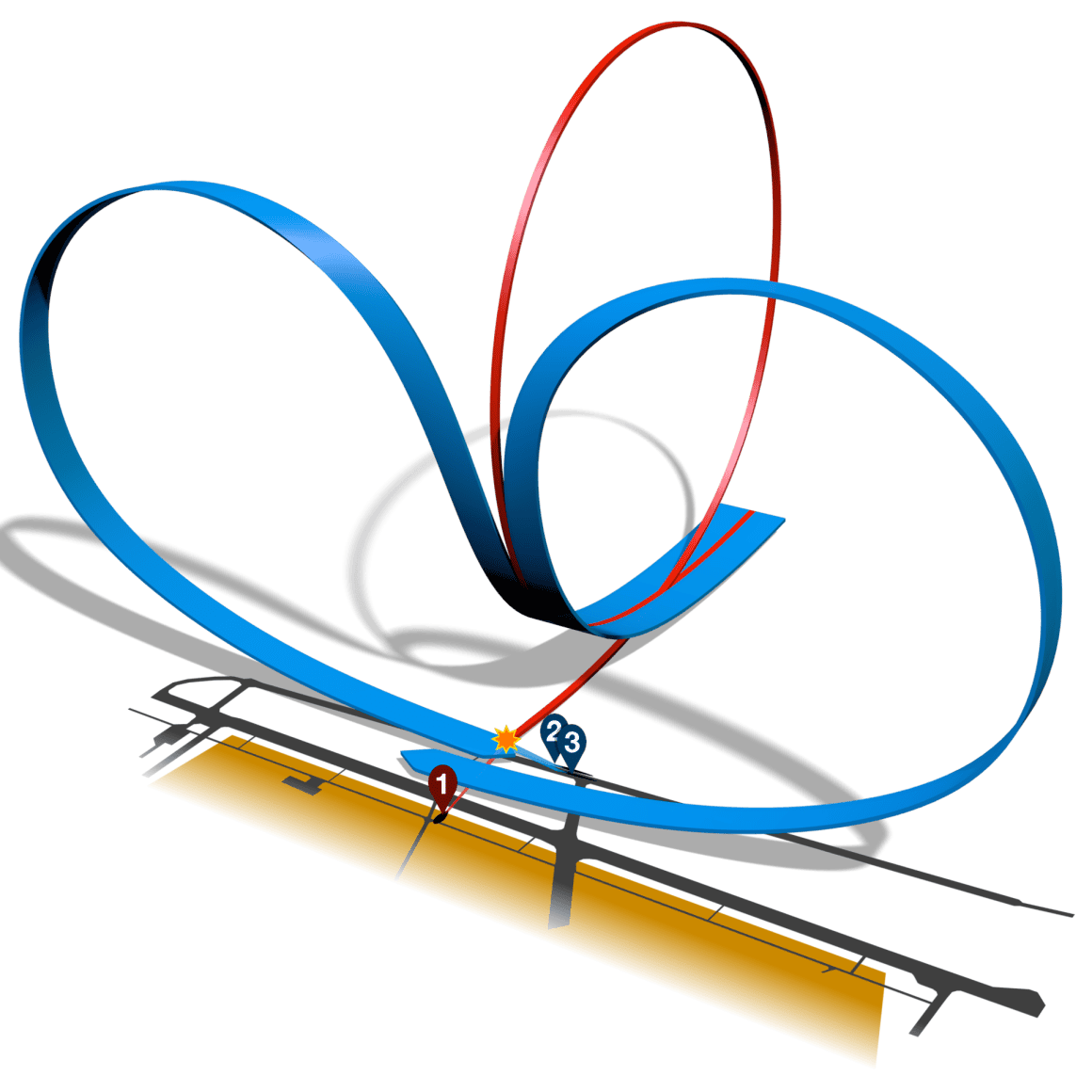A KC-10 crew member recalls the somber experience at the “Flugtag ’88” Airshow at Ramstein Air Base.
On 28 August 1988, a KC-10 from the 434th Air Refueling Wing at Seymour Johnson Air Force Base, NC, was on display at Ramstein Air Base for the Flugtag ’88 airshow.
During the show, at 1600 local time, three aircraft from the Italian Air Force demonstration team collided while performing a maneuver. One of the jets exploded and struck the ground and sent a fireball of fuel and fuselage into the spectators and another of the Italian aircraft crashed into an emergency medical evacuation UH-60 Black Hawk helicopter.
Thirty-one people and the three pilots died at the scene, and in the weeks after the incident, thirty-six more died, many from severe burns. The final casualty was Captain Kim Strader, the pilot of the UH-60. He died 20 days later, on Saturday, 17 September, at Brooke Army Medical Center in Texas
Three hundred and forty-six spectators also suffered serious injuries, and hundreds more had minor injuries.
My KC-10 Crew Was Safe
Four aircrew members and three crew chiefs from Seymour Johnson were with the KC-10, and several of them had left the main spectator area to get something to eat when the collision occurred.
At first they thought the sound of the explosions was just aircraft in the show performing a simulated bombing run, but when heavy black smoke rose above the trees lining the runway, and they heard people screaming, they knew it was no simulation.
The scene was chaotic at first, with spectators running from the crash area and security and medical personnel rushing towards the fire and smoke. It wasn’t long before the situation was under control, and emergency personnel began treating the victims.
The KC-10 crew members met up at their aircraft and were relieved to discover that none of them had been injured and that their jet had not been damaged.
Italian Demonstration Team Was Experienced
The Italian Air Force demonstration team involved in the involved in the Ramstein Air Base Disaster, the ‘Frecce Tricolori,’ was flying ten Aermacchi MB.339A/PAN jets. This single-engine military trainer and light attack aircraft had a top speed of 588 miles per hour, and the team had been using them since 27 April 1982.
The Italians were performing a maneuver they called the ‘pierced heart’ when the collisions occurred. Two groups of aircraft form a heart shape and pass each other while parallel to the runway as a single aircraft flies through the bottom tip of the heart, “piercing” it.

On that day, Italian Lieutenant Colonel Ivo Nutarelli was flying the lone jet. He came in low and did not have time to adjust his altitude or slow his aircraft and struck two of the other jets in the formation, although video of the incident showed that he may have been trying to pull up just before the collision.
In the days following the disaster, there were discussions about the about how close spectators at airshows should be to runways and how to best coordinate emergency responses when American and German responders were at a scene together. Discussions that eventually led to significant safety improvements that are now commonplace at every air show with military participants.
Pilot Error Ruled Out at Ramstein Air Base Disaster
Following the disaster, officials from the Italian Air Force ruled out pilot error as a possible cause. Nutarelli was a very experienced pilot, with approximately 4,250 hours in the cockpit. In the 27 years the Frecce Tricolori had been doing the ‘pierced heart’, they had performed it thousands of times without an accident.
That was not the final word on the incident, as several rumors about its cause began to spread. In 1991, a German reporter in the newspaper Tageszeitung went as far as suggesting that Nutarelli’s aircraft had crashed due to sabotage, but there has never been any evidence to support his theory.
Others speculated that sabotage could have been in the form of Electro-Magnetic Pulse (EMP) or radio frequency (RF) weapons or less modern methods such a miniature explosive device that someone could have detonated remotely. Like with the newspaper article, no one has presented any evidence that sabotage occurred.
Runway Reopens and KC-10 Heads Back to North Carolina
Throughout the evening and night following the disaster, the KC-10 crew saw and heard helicopters flying from the base carrying victims to hospitals in the area.
The KC-10 was supposed to leave the next day, but base officials halted all fights to allow recovery of victims and the deceased to continue. They also needed time to remove debris from the crashed aircraft and repair the runway.
News about the disaster quickly spread around the world, including to family members and fellow Airmen back at Seymour Johnson. They heard about the crash but had no way of knowing if the KC-10 crew and their aircraft was involved.
In those days before widespread use of the Internet, email, and cell phones, it took several hours for them to call home and reassure everyone that they were all safe.
We eventually made it home
Two days later, when the runway reopened, the KC-10 crew rode a crew bus from base lodging to the aircraft to fly back to North Carolina. Along the way, they saw many cars still in the spectator parking area, no doubt left behind by those killed and injured during the disaster.
They refueled the KC-10 and got it ready to fly, and as the huge tanker began its roll down the runway, the crew noticed a large, blackened area where the grass had been burned, a final sobering reminder of the disaster.

This was unfortunately not the only airshow crash involving an Italian military pilot. In 2017, test pilot Gabriel Orlandi crashed and perished at the Terracina Airshow near Rome.
